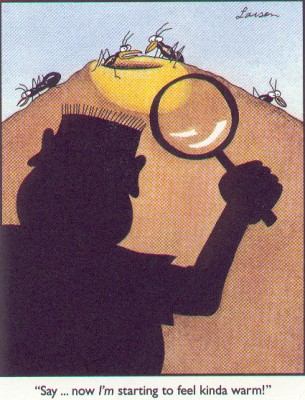
Posted on 09/19/2022 2:13:28 PM PDT by LibWhacker
How many stars are there in our galaxy? How many grains of sand in the Sahara? How many ants live on Earth? These are all questions that seem impossible to answer. However, through intensive and extensive data analysis, science is coming amazingly close to finding the solutions. When it comes to ants, a team led by Würzburg biologists Sabine Nooten and Patrick Schultheiss has done just that.
Schultheiss has been conducting research at the Chair of Behavioral Biology and Sociobiology at Julius Maximilians University (JMU) since 2022. He was drawn to Würzburg from the University of Hong Kong. The publication entitled "The Abundance, Biomass, and Distribution of Ants on Earth," now published in Proceedings of the National Academy of Sciences (PNAS), was produced in cooperation with Julius-Maximilians-Universität Würzburg.
'A 20 with 15 zeros'
But how many ants are there? Sabine Nooten, also lead author and recently relocated from Hong Kong to Würzburg, clarifies, "According to our estimates, the global ant population is 20 x 10 to the power of 15—that is, 20 quadrillion animals. That is a 20 with 15 zeros, which is hard to grasp and appreciate."
It becomes clearer when you calculate the biomass of the animals. This amounts to 12 megatons of carbon. "That exceeds the combined biomass of wild birds and mammals and corresponds to about 20 percent of humanity's biomass," Patrick Schultheiss explains.
In order to calculate the number of ants, the team reviewed a wide variety of existing studies on the insects, ultimately evaluated about 500 suitable papers, and combined them in a database.
Distribution varies greatly
It was known that ants inhabit almost all habitats, except for the polar regions. The study was the first to empirically investigate how they are distributed there. It turned out that the tropics have the highest ant density. Besides the climate zone, local ecosystems also play an important role. Forests and arid regions are home to the most specimens, whereas they are much rarer in areas heavily influenced by humans.
Future studies should focus on which environmental influences specifically affect the distribution of the ants and to what extent this will change, especially as a result of climate change.
Important role in the ecosystem
Why the number and distribution of these animals is so important in the first place is shown by an example cited in the study: "Per hectare, ants move up to 13 tons of soil mass per year," reports Patrick Schultheiss, "so they have a great influence on maintaining the nutrient cycle and also play a decisive role in the distribution of plant seeds."
Sometimes, however, the insects' influence is also negative. Invasive species, for example fire ants, can have a negative impact on local biodiversity and cause considerable damage.
I’m pretty sure most of them live in California. HATE the little pismires.
If there no ants there would be a lotta little animals corpses lying about. Them and the bacteria do a lot of “cleaning” up. Oh, and tell PETA, that they eat meat!
How many ants?
God knows.
How many ants?
God knows.

Goody two, Goody two, Goody Goody Twoshoes
Don’t drink
Don’t smoke
What do ya do
I swear most were in my place at times. I ended up sealing cracks under the kitchen sink and around a window a/c unit. No bugs this year.
Nope. I used to use “Durham’s Red Ant Balls” (Cyanide). that worked great. (Made a great fertilizer too... the next summer, where I had used them, the grass was 3X more lush than in any other place.
But then people started to use them for more nefarious purposes and that was the end of that.
Irony: Watching ‘The Hive’ right now.
There are more than 12,400 species of ants throughout the world.
Saw some extra tiny ones in the back yard this afternoon. About 1/4 the size of a regular ant.

I used to have two anthills in my front yard.
>>>>>>>>>>>>>>>>>>>>>>>>>>>>>>>>>>>>>>>>>>>>
I live in the mountains of western Maryland on a farm in a 120 year old house. Oddly, two critters that should be plentiful but are scarce around here are ants and mosquitoes. Have no idea why.
I see where this agenda is headed. Too many humans, as that biomass greatly exceeds that of the ants plus all of birds and mammals.
Disclaimer: Opinions posted on Free Republic are those of the individual posters and do not necessarily represent the opinion of Free Republic or its management. All materials posted herein are protected by copyright law and the exemption for fair use of copyrighted works.